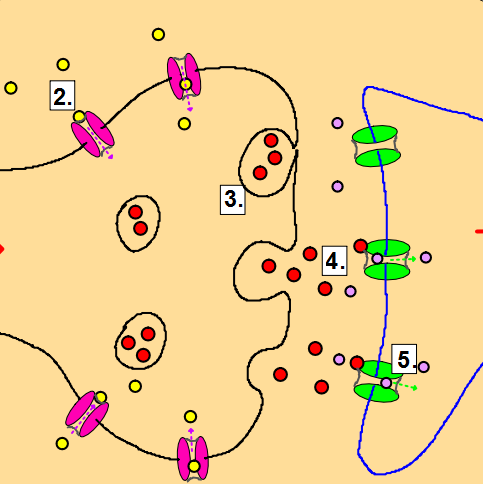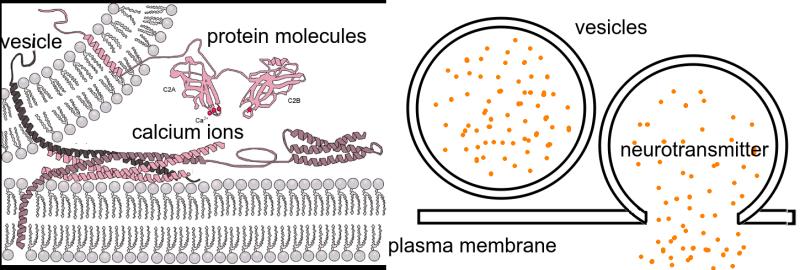Synapses
 This activity involves lots of discussion and a little competition to help students learn the details of synaptic transmission. First by annotation of simple diagrams showing the structures of a synapse students are introduced to the main points and then in a collaborative activity students take turns in becoming the expert about each step. A final activity is an online multiple choice quiz followed by a plenary writing task.
This activity involves lots of discussion and a little competition to help students learn the details of synaptic transmission. First by annotation of simple diagrams showing the structures of a synapse students are introduced to the main points and then in a collaborative activity students take turns in becoming the expert about each step. A final activity is an online multiple choice quiz followed by a plenary writing task.
Lesson Description
Guiding Questions
How could an electrical impulse cause the release of a chemical from a cell?
How can a chemical cause the creation of an action potential in a post-synaptic neurone?
Activity 1 - Notes - how a synapse works
- Watch this animation of a synapse and then answer the short questions under the animation
Questions
- What triggers the release of a neurotransmitter chemical, like acetylcholine, from the axon terminal?
The Ca2+ ions entering the axon ending.
- Which part of the 'ligand-gated sodium channel' does acetylcholine bind to?
The receptor molecule.
- When sodium floods into the post synaptic cell, what happens if the threshold potential is reached?
Depolarization, a new action potential is created.
Activity 2 - Complete the Synapses worksheet
Carry out activity using ![]() this Synapse student worksheet shown below.
this Synapse student worksheet shown below.
To to:
- Assign the correct number from the diagram to each of the descriptive statements.
Some statements will share the same number. - Label the diagram with key words from the descriptive statements.
Activity 3 - Review games
Stepping stones carrousel activity

- Stand around the diagram with the numbered steps for the transmission of a nerve impulse at a synapse.
- Each person takes one point and works out exactly how to explain it, in as few words as possible.
- Take turns to explain the whole process step by step.
- Then each person moves one place clockwise, and takes the place of another student.
- One minute of discussion for each student to share their explanation with their neighbur, then repeat the exercise.
- Rotate places again, until all the students have described all the steps.
- Any student can play a 'joker' once and stay in place for one turn, if the pace is too fast.
Kahoot quiz
Try this ![]() Kahoot quiz on synapses
Kahoot quiz on synapses
Plenary activity
A great plenary activity is to individually write the steps of the process of synaptic transmission onto paper, from memory before leaving the room!
Teachers notes
This lesson covers the details of the syllabus for synapses.
One additional detail is missing because it spoiled the flow of the explanation, that is the detail that the neurotransmitter is removed from the synapse, and some is reabsorbed into the pre-synaptic axon ending.
These activities take about 1 hour in total. The final activities could be used as a short test in the beginning of the next lesson.
Activity 1 is really a warm up activity and the animation terminology is not quite the same as the IB guide.
Extra questions: It would be a good idea to try to link the cell organelles lesson of eukaryotes with these functions. For example: The role of rER to make proteins, Golgi apparatus to package neurotransmitter molecules into synaptic vesivles, and the process of exocytosis.
Activity 2 is an information transforming task to give students time to read and digest the information, while beginning to understand / remember the steps of the process.
Activity 3 is a nice lively learning activity which illustrates how Biology needs to be memorised, not just understood, for success in IB. The Kahoot quiz is really a bit of fun, and a bit of competition. It does require that all students can connect to the web independently. It's great on iPads or phones.

 IB Docs (2) Team
IB Docs (2) Team
